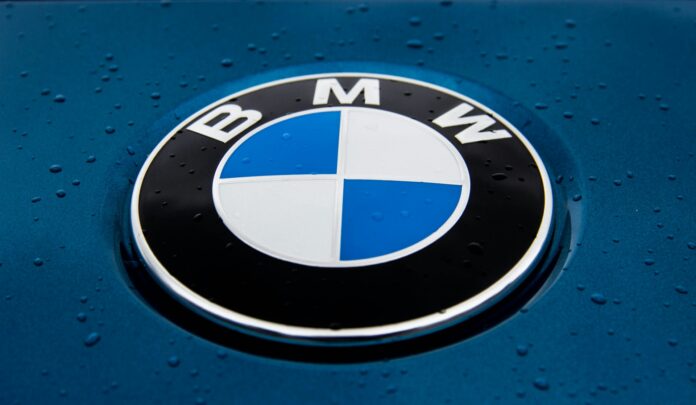The best-selling model features updated infotainment, enhanced comfort, and fresh interior design
The BMW 3 Series has undergone a series of significant updates for 2024, including a refreshed design, an enhanced infotainment system, and a longer electric-only range for plug-in hybrid (PHEV) variants. Production is set to begin in July at BMW’s Munich plant, with the updated models available in the UK starting at £39,045 for the 320i saloon and £40,845 for the 320i Touring estate.
The 3 Series will now be available exclusively with petrol or plug-in hybrid power, as diesel variants have been discontinued in the UK market. The updated range includes the 330e hybrid, starting at £46,080, and the M340i variant priced £11,765 higher. A new 19.5kWh battery powers the PHEV, offering a total electric range of 63 miles, which is 22 miles more than the previous model. This range is slightly less than the Mercedes-Benz C300e’s 71 miles but significantly more than the Volkswagen Golf GTE’s 40 miles. The PHEV remains in the 8% benefit-in-kind (BIK) tax band in the UK.
The battery can be charged at speeds of up to 11kW, allowing a full recharge in 2 hours and 15 minutes. It works in conjunction with an electric motor and a 2.0-litre four-cylinder petrol engine, providing a combined output of 296bhp – an increase of 8bhp from before. The 320i variant uses a mild-hybrid 2.0-litre four-cylinder petrol engine producing 181bhp, achieving 0-62mph in 7.4 seconds and a top speed of 155mph. The M340i, powered by a 3.0-litre straight-six engine with a 48V starter-generator, delivers 374bhp and 369lb-ft of torque, reaching 0-62mph in 4.4 seconds.
BMW has made several adjustments to the 3 Series’ chassis to enhance comfort without compromising driving involvement. These improvements include stiffer mounting points for the rear dampers, faster and more responsive steering, and the option for upgraded adaptive dampers. The chassis tweaks aim to provide a “notable” increase in comfort in various driving situations.
To reduce weight, BMW has used aluminium for the bonnet, front wheel arches, engine subframe, and front spring struts. Although the total weight figure is yet to be released, these measures contribute to overall efficiency. Exterior changes are subtle but include a cleaner, more aerodynamic front bumper, more angular sills, and new 19-inch alloy wheel designs. Additionally, nine new paint finishes are available.
Standard features on all 3 Series models include 17-inch alloy wheels, tri-zone climate control, and a 14.9-inch curved infotainment display combined with a 12.3-inch instrumentation display. The interior design focuses on a clean, minimalist look, replacing many physical buttons with the large touchscreen that runs the latest-generation iDrive system.
The updated iDrive system introduces a customizable widget bar, augmented reality for the sat-nav, 5G connectivity, and a streamlined connection to the MyBMW app. BMW has also added new interior trim options, including dark graphite matt, grey-blue ash wood, and carbon fibre and aluminium inserts. The Crafted Clarity application offers glass options for the iDrive controller, ignition button, and gear selector.
New ambient lighting designs enhance the driving experience by signalling incoming phone calls or opening doors. The updated sports steering wheel and air-vent design are borrowed from larger BMW models like the 5 Series and 7 Series. M Performtex seats, which are standard on the M340i and new M3, are available as an option on standard models.
Analysis:
The updated BMW 3 Series reflects the automotive industry’s shift towards more sustainable and technologically advanced vehicles. By discontinuing diesel variants, BMW aligns with broader environmental goals and consumer demand for greener alternatives. The extended electric-only range of the PHEV models addresses growing concerns about fuel efficiency and emissions, positioning the 3 Series as a more eco-friendly option in its segment.
From a political perspective, BMW’s decision to enhance its hybrid offerings can be seen as a response to increasingly stringent emissions regulations in Europe and other markets. Governments are pushing for lower emissions and higher fuel efficiency, which influences automakers to innovate and adapt their product lines. The 3 Series’ improved hybrid technology helps BMW comply with these regulations while maintaining its competitive edge.
Economically, the shift away from diesel engines may impact certain markets where diesel remains popular. However, the growing acceptance and demand for hybrid and electric vehicles likely offset this potential downside. The extended range of the 330e PHEV provides a practical solution for consumers seeking lower running costs and tax benefits, making it an attractive option for both private buyers and corporate fleets.
Sociologically, the updated 3 Series caters to a demographic that values luxury, performance, and environmental consciousness. The emphasis on a minimalist, technology-driven interior design reflects current consumer preferences for intuitive, user-friendly interfaces. The integration of advanced infotainment and connectivity features aligns with the lifestyle of tech-savvy customers who expect seamless digital experiences in their vehicles.
From a gender perspective, the updated 3 Series aims to appeal to a broad audience with its enhanced comfort and customizable options. The introduction of features like M Performtex seats and ambient lighting caters to diverse tastes and preferences, ensuring that the vehicle meets the needs of various drivers.
Considering the perspective of minorities and marginalized groups, BMW’s focus on accessibility and inclusivity through advanced technology and customization options is crucial. The intuitive iDrive system and augmented reality navigation can enhance the driving experience for individuals with different abilities, ensuring that the 3 Series remains accessible to a wider range of consumers.
Overall, the 2024 BMW 3 Series represents a significant step forward in the evolution of one of the brand’s most iconic models. By prioritizing sustainability, technological innovation, and enhanced comfort, BMW ensures that the 3 Series remains a leader in the compact executive class.
